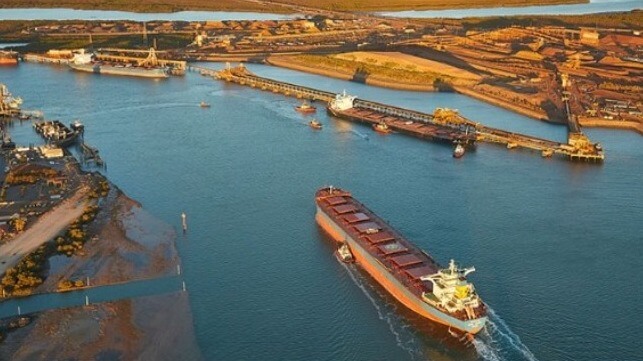Shipping Lines and Miners Join to Form Australia-Asia Green Corridor

Outlined just six months ago as part of the global net-zero initiatives launched at the COP26 conference, the concept of green corridors to promote decarbonization in the maritime industry is continuing to gain momentum. In the latest move, five of the world’s leading mining companies and bulk shippers of ore are joining with the Global Maritime Forum to explore an iron ore Green Corridor between Australia and East Asia.
The new consortium is the first example of major charterers, BHP and Rio Tinto, joining with shipping companies, Oldendorff Carriers and Star Bulk Carriers Corp, to work jointly to develop an operational green corridor.
Through the work in the consortium and with inputs from the wider supply chain, the partners aim to develop a framework as a preparatory step toward real-world implementation of a green iron ore shipping value chain. The companies signed a letter of intent working with the Global Marine Forum which is serving as an advocate for the new initiatives and together they will assess the development of the Australia-East Asia iron ore Green Corridor.
Member states committed to the concept of the corridors among the initiatives from the COP26 conference. The concept is for specific shipping routes where the economics, infrastructure, and logistics of zero- or near-zero emission shipping are more feasible and rapid deployment, are set out and supported by targeted policy and industry action to lead by example in decarbonization. So far, Los Angles and Shanghai working with shipping companies defined one corridor while five Northern European and Baltic ports recently announced plans for a second corridor.
“Zero-greenhouse gas emission pathways require the creation of a parallel value chain that involves new ways of working, new contractual relationships, and drives the development of decarbonized fuel production and infrastructure,” said Johannah Christensen, CEO of the Global Maritime Forum. “This new iron ore green corridor collaboration is an important step towards enabling zero greenhouse gas emission shipping from both the supply and demand side,”
The Getting to Zero Coalition launched a report in 2021 that demonstrates how Green Corridors can be conceived, prioritized, and designed with a pre-feasibility study for an iron ore route between Australia and East Asia. The study suggested that green ammonia is the likely fuel choice for this corridor based on favorable production conditions, an enabling regulatory environment, and willing stakeholders.
Taking the study further, the five companies said they intend to jointly assess green ammonia supply, bunkering, and first-mover support mechanisms, necessary for their participation in a viable Australia to East Asia iron ore Green Corridor.

that matters most
Get the latest maritime news delivered to your inbox daily.
“Focusing on the feasibility of decarbonizing specific trade routes of the world is an indispensable step to create the foundation for the maritime energy transition,” said Charis Plakantonaki, Chief Strategy Officer at Star Bulk Carriers speaking on behalf of the new initiative. “Consistent with our vision to lead in the industry’s efforts to phase out GHG emissions, Star Bulk is committed to partnering up with other frontrunners to enable progress in this multi-dimensional, yet so critical for our future, challenge.” Each of the companies noted that the project represents an expansion of the individual efforts at decarbonization and they believe by working in partnership they can accelerate reaching net-zero.
The companies said they hope this effort will facilitate a robust public-private dialogue to investigate the conditions that need to be in place to mobilize demand. The goal is to feasibly scale zero or near-zero-GHG emission shipping on the corridor.
